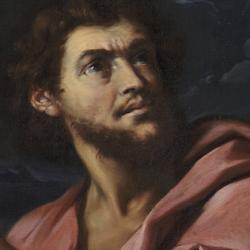Griffith suggests that John writes a pastoral rather than a polemical letter, one designed to shore up the identity of his church and prevent further apostasy. John achieves this by insisting on faithfulness in the confession of Jesus as Messiah, by an exhortation to communal love, and by a warning to avoid idols. Like many ancient letters, John ends with a summary of his main themes, including the exhortation to avoid idols.
For Jews and early Christians, Griffith says, “idolatry” had to do with service, what one does, and particularly what one does with respect to wood and stone images. Jews charged that pagans really did worship the figures they bowed to. An idol, for Griffith, is “a physical representation of a deity, usually used as an object of worship.” This is based in part on the evidence of the LXX, which uses eidolon to translate 15 different Hebrew words, but always uses the Greek word (against other Greek usage) to refer to pagan gods and images of those gods. He finds the same usage throughout the NT: Apart from Ephesians 5:5 and Colossians 3:5, which edge toward a metaphorical use, the eidolon group refers to “activities associated with cultic images.”















